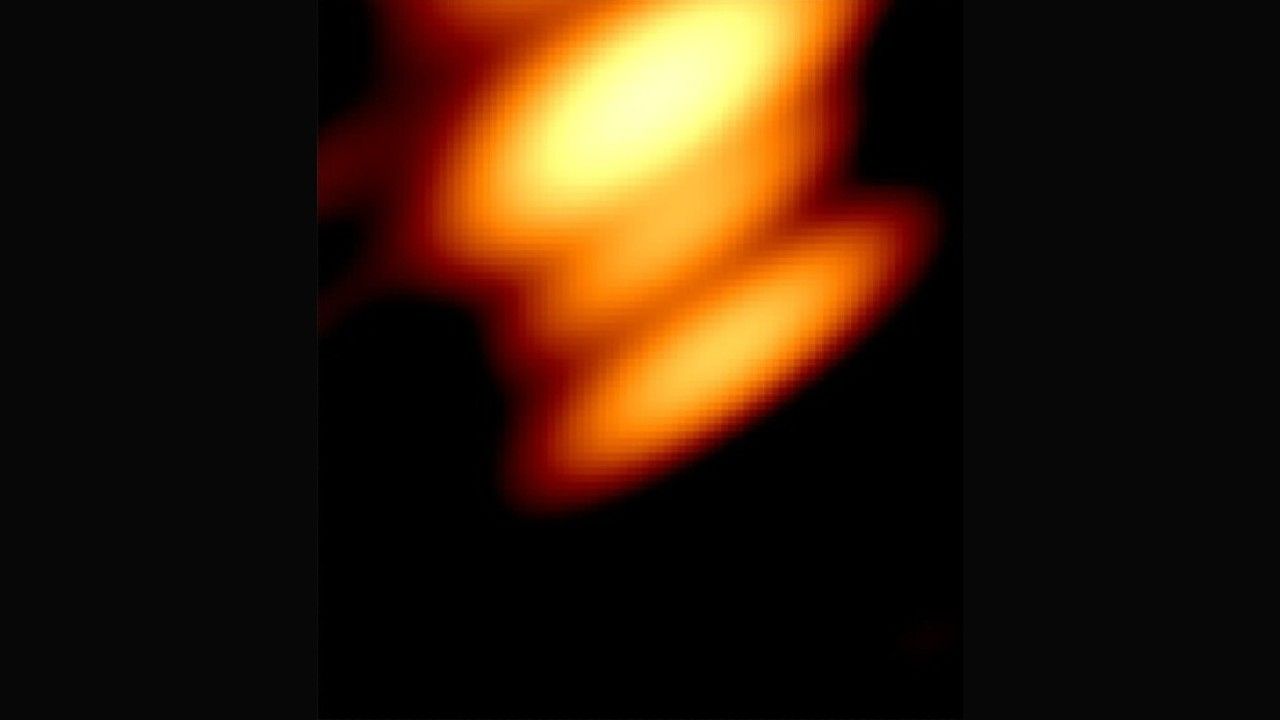It was a hole in two.
Finnish scientists have shot two black holes orbiting each other, offering the first ever definitive proof that these intergalactic voids come in pairs, per a study published October 9 in the Astrophysical Journal.
“For the first time, we managed to get an image of two black holes circling each other,” lead author Mauri Valtonen, an astronomer at the University of Turku in Finland, said in a statement describing the celestial double-header.
The twin abysses, which were reportedly spotted through the faint fluctuations of radio light recorded by telescopes on land and in outer space and identified by the “intense particle jets they emit, according to Valtonen, Livescience reported.

Despite being perfectly black, these intergalactic holes “can be detected by these particle jets or by the glowing gas surrounding the hole.”
These particular ruptures are locked in a 12-year orbit some 5 billion light years from Earth, and are circling the center of a quasar called OJ28.
Quasars are extremely bright galactic cores whose light is created when a gargantuan black hole at the galaxy’s center gobbles up the intergalactic gas and particles surrounding it. For reference, OJ287 has a mass roughly 18 billion times greater than the sun while its smaller dance partner is around 150 million times our main star’s size, IFL Science reported.
“Quasar OJ287 is so bright that it can be detected even by amateur astronomers with private telescopes,” said Valtonen. “What is special about OJ287 is that it has been thought to harbor not one but two black holes circling each other in a 12-year orbit, which produces an easily recognizable pattern of light variations in the same period.”

Coincidentally, OJ287 was first documented accidentally in the 19th century, when the region of the sky in question was snapped by astronomers looking for something else. At the time, it was unfathomable that black holes existed, let alone quasars.
Meanwhile, the idea of black holes orbiting each other was first floated in 1982, when University Of Turku student Aimo Sillanpää noticed that the brightness of the object fluctuated regularly over a 12-year period.
However, it wasn’t until the pair was snapped in the latest study that scientists confirmed the idea of a black hole happy hour.
To arrive at their latest conclusion, researchers used a radio telescope system radio image obtained by a network that featured the RadioAstron, a Russian scientific satellite equipped with a radio telescope that was in operation from 2011 to 2019.
“The satellite’s radio antenna went halfway to the moon, which greatly improved the resolution of the image,” Valtonen said. “In recent years, we have only been able to use Earth-based telescopes, where the image resolution is not as good.”
By contrasting the images to prior calculations, scientists were able to distinguish two features corresponding to the jets of each black hole that showed up exactly where the theory said they would.
Of course, there are a few caveats, namely that the two jets in the image could overlap, meaning that there is the vague possibility that only one when a black hole is depicted.
Researchers said they could definitely confirm the existence of the second black hole by employing images with a resolution comparable to the RadioAstron.
Source link
